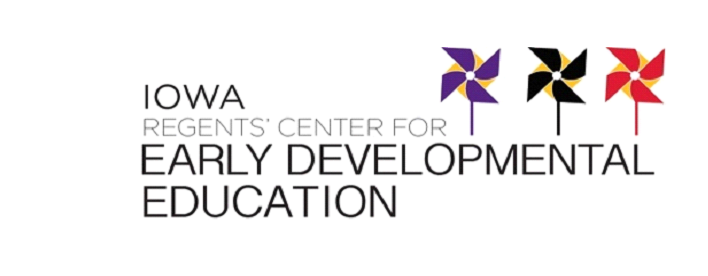Tjaden's curiosity for observing insects is fulfilled with a microscope.
NAEYC
Curriculum: Essential Characteristics
2.A.10- The curriculum guides Ms. Schaffer to incorporate content, concepts, and activities that foster social, emotional, physical, language, and cognitive development and that integrate key areas of content including...science...and...technology...
During center time, Ms. Schaffer makes a microscope set available for children to use with slides of various insects that the children can examine closely.
Curriculum Content Areas for Cognitive Development: Science
2.G.06-Children in Ms. Schaffer's class are provided varied opportunities and materials that encourage them to think, question, and reason about observed and inferred phenomena.
Tjaden is very engaged by the microscope during center time. He makes observations about different insects and his own hand using the microscope. Ms. Schaffer asks questions to further stimulate his thinking. For example, she asks him, "Can you see your finger? Is it big or little?"
Curriculum Content Areas for Cognitive Development: Technology
2.H.02- All children in Ms. Schaffer's class have opportunities to access technology (e.g., tape recorders, microscopes, computers) that they can use by themselves, collaboratively with their peers, and with teaching staff or a parent.
Ms. Schaffer makes a microscope set available during center time. Tjaden looks at slides of insects and shares his observations with Ms. Schaffer.
IELS
7.2-Play and Senses
Children engage in play to learn.
Tjaden uses sights to discriminate between, explore, and experience activities and materials.
Tjaden looks at insects under a microscope. He decides to try looking at his finger under the microscope and asks Ms. Schaffer if she can see it. She confirms that she can and suggests he look at his finger under the microscope too.
8.1-Curiosity and Initiative
Children express curiosity, interest, and initiative in exploring the environment, engaging in experiences, and learning new skills.
Tjaden chooses to explore a variety of activities and experiences with a willingness to try new challenges.
Tjaden looks at insects under a microscope with Ms. Schaffer. He makes note of the different characteristics of the insects he is looking at. When he changes slides, he asks Ms. Schaffer if he is putting it in upside down or not. She shows Tjaden the arrows on the slide that match the arrows on the microscope and when the arrows match, the slide is right side up.
11.4-Scientific Reasoning
Children observe, describe, and predict the world around them.
Tjaden shows curiosity about living and non-living things.
Tjaden is very interested in using the microscope. He discusses the physical features of insects with Ms. Schaffer. He asks Ms. Schaffer if she can see his finger under the microscope after taking a slide out. Ms. Shaffer encourages him to look at his finger after she does and asks if it looks big or small. Tjaden then decides to look at another insect.
IQPPS
Curriculum: Essential Characteristics
2.9- The curriculum guides Ms. Schaffer to incorporate content, concepts, and activities that foster social, emotional, physical, language, and cognitive development and that integrate key areas of content including...science...and...technology...
During center time, Ms. Schaffer makes a microscope set available for children to use with slides of various insects that the children can examine closely.
Curriculum Content Areas for Cognitive Development: Science
2.28-Children in Ms. Schaffer's class are provided varied opportunities and materials that encourage them to think, question, and reason about observed and inferred phenomena.
Tjaden is very engaged by the microscope during center time. He makes observations about different insects and his own hand using the microscope. Ms. Schaffer asks questions to further stimulate his thinking. For example, she asks him, "Can you see your finger? Is it big or little?"
Curriculum Content Areas for Cognitive Development: Technology
2.30- All children in Ms. Schaffer's class have opportunities to access technology (e.g., tape recorders, microscopes, computers) that they can use by themselves, collaboratively with their peers, and with teaching staff or a parent.
Ms. Schaffer makes a microscope set available during center time. Tjaden looks at slides of insects and shares his observations with Ms. Schaffer.
HSPS
1304.21(c)(1)(ii) - Ms. Schaffer provides for the development of cognitive skills by encouraging each child to organize his or her experiences, to understand concepts, and to develop age appropriate…reasoning, problem solving and decision-making skills which form a foundation for school readiness and later school success.
Tjaden is very engaged by the microscope during center time. He makes observations about different insects and his own hand using the microscope. Ms. Schaffer asks questions to further stimulate his thinking. For example, she asks him, "Can you see your finger? Is it big or little?"
1304.21(c)(1)(vii) - Ms. Schaffer provides individual and small group experiences indoors… through this exploration of a microscope.
Ms. Schaffer makes a microscope set available during center time. Tjaden looks at slides of insects and shares his observations with Ms. Schaffer.
HSCOF
Science
Scientific Skills and Methods
- Begins to use senses and a variety of tools and simple measuring devices to gather information, investigate materials and observe processes and relationships.
- Begins to describe predictions, explanations and generalizations based on past experiences.
Scientific Knowledge
- Expands knowledge of and abilities to observe, describe and discuss the natural world, materials, living things and natural processes.
Approaches to Learning
Initiative and Curiosity
- Chooses to participate in an increasing variety of tasks and activities
- Grows in eagerness to learn about and discuss a growing range of topics, ideas and tasks

